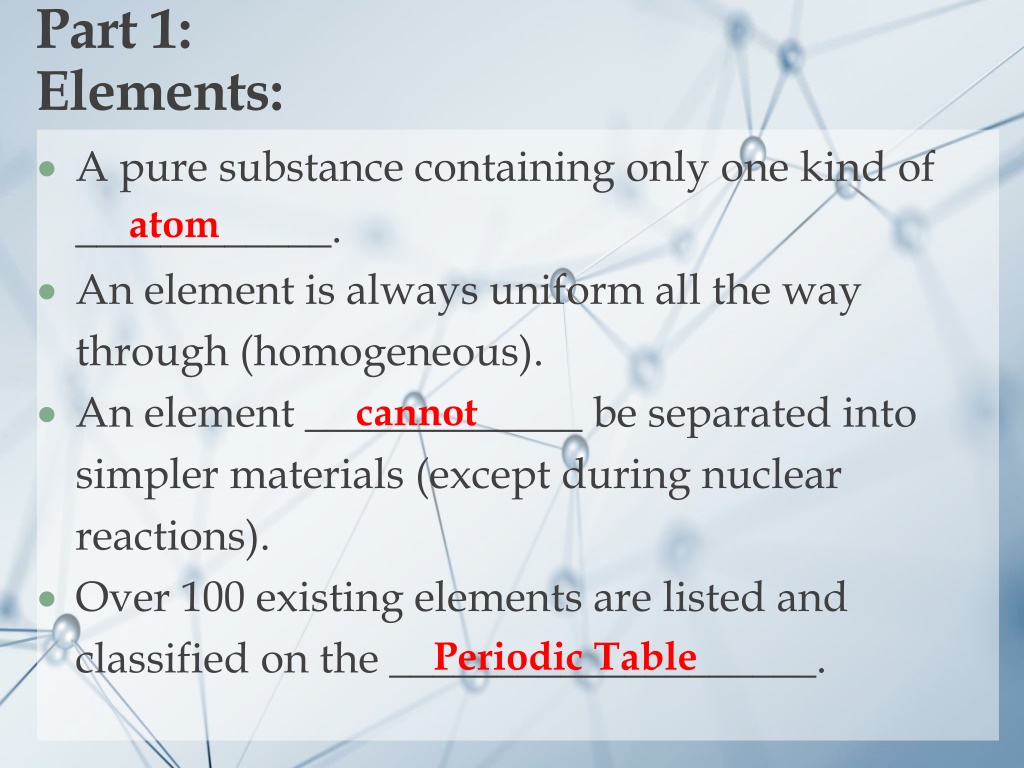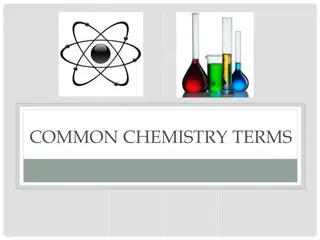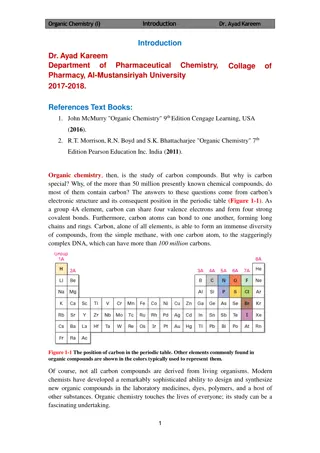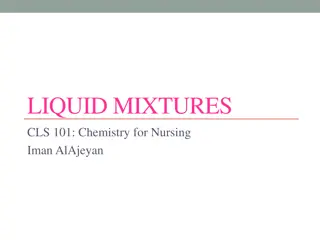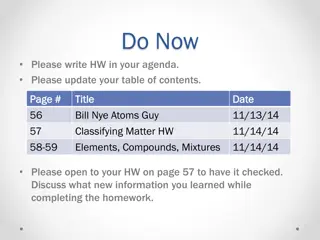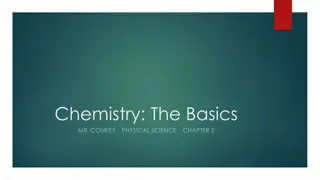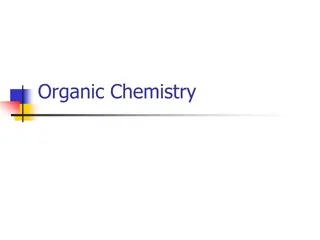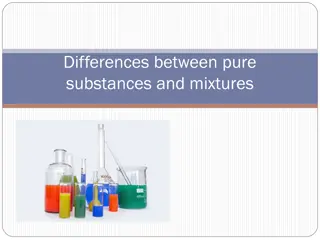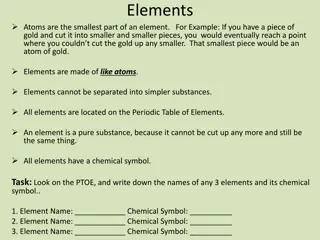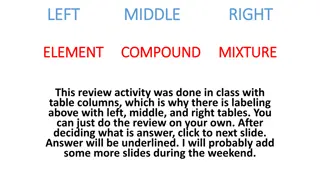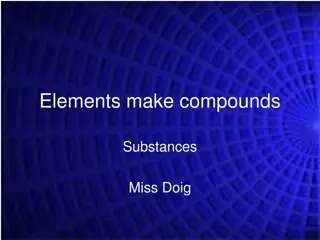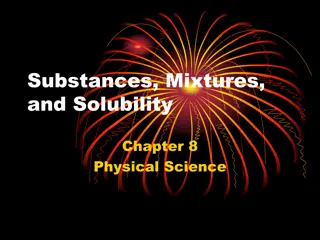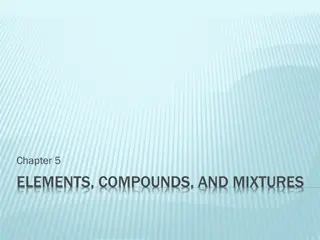Understanding Elements, Compounds, and Mixtures in Chemistry
A comprehensive explanation of elements, compounds, and mixtures in chemistry. Elements are pure substances composed of only one kind of atom, while compounds consist of two or more kinds of atoms chemically combined. Mixtures involve two or more substances that are not chemically bonded, which can be either homogeneous (solutions) or heterogeneous. Properties and methods of separation for each type are discussed.
Download Presentation

Please find below an Image/Link to download the presentation.
The content on the website is provided AS IS for your information and personal use only. It may not be sold, licensed, or shared on other websites without obtaining consent from the author. Download presentation by click this link. If you encounter any issues during the download, it is possible that the publisher has removed the file from their server.
E N D
Presentation Transcript
Part 1: Elements: A pure substance containing only one kind of ____________. An element is always uniform all the way through (homogeneous). An element _____________ be separated into simpler materials (except during nuclear reactions). Over 100 existing elements are listed and classified on the ____________________. Periodic Table atom cannot
Compounds: A pure substance containing two or more kinds of _______________. The atoms are _________________ combined in some way. Often times (but not always) they come together to form groups of atoms called molecules. A compound is always homogeneous (uniform). atoms chemically
Compounds: Compounds ___________________ be separated by physical means. Separating a compound requires a chemical reaction. The properties of a compound are usually different than the properties of the elements it contains. cannot
Mixtures: Two or more ________________ or _________________ NOT chemically combined. No reaction between substances. Mixtures can be uniform (called ________________________) and are known as solutions. elements compounds homogeneous
Mixtures: Mixtures can also be non-uniform (called ________________________). Mixtures can be separated into their components by chemical or physical means. The properties of a mixture are similar to the properties of its components. heterogeneous
